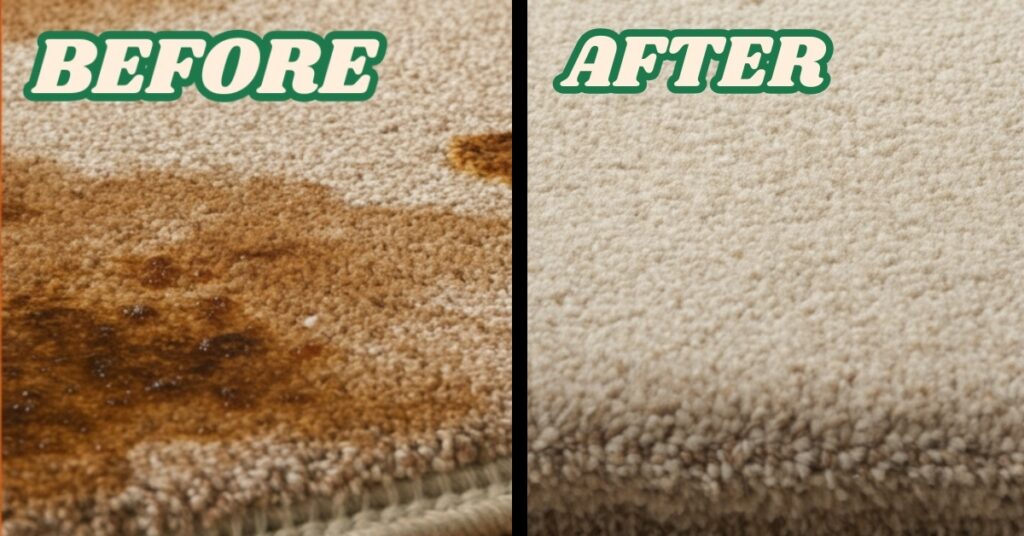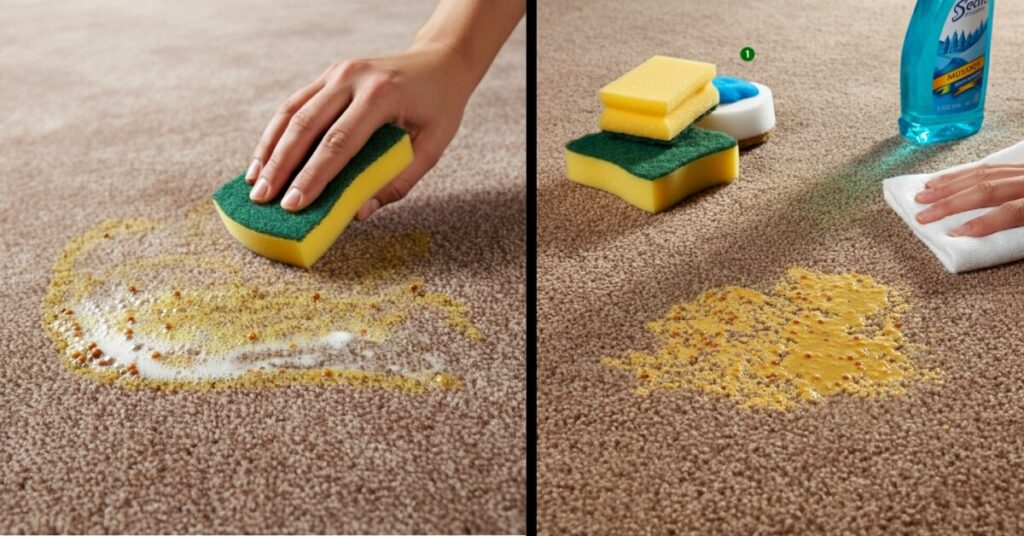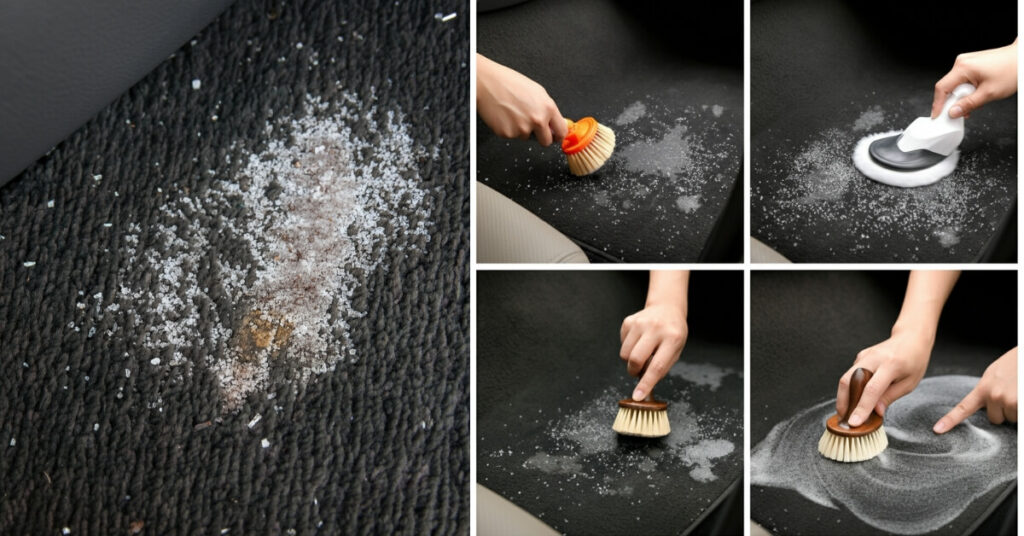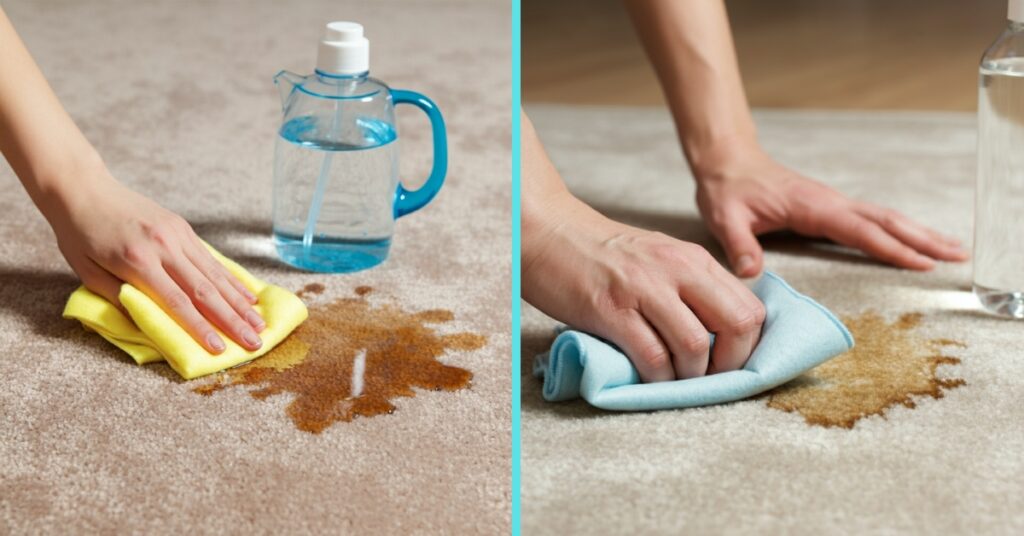As an Amazon Associate, I earn from qualifying purchases.
Discovering a stain on your beautiful wool carpet can be frustrating. However, knowing how to get a stain out of a wool carpet properly can make all the difference. Wool is a natural, durable fiber, but it requires specific care to prevent damage. With the right techniques and cleaning solutions, you can effectively remove stains and keep your carpet looking its best for years. This guide provides a detailed approach to help you tackle spills and spots without harming your investment.
Successfully removing a stain from wool involves understanding the material and acting quickly. Unlike synthetic fibers, wool is highly absorbent, meaning it can quickly soak up liquids. Therefore, immediate action is crucial to prevent the spill from setting deep into the fibers. This article will cover everything you need, from initial steps to handling specific types of stains like red wine or coffee, ensuring you have the knowledge to maintain your wool carpet’s beauty.
Preparing to Clean a Wool Carpet Stain
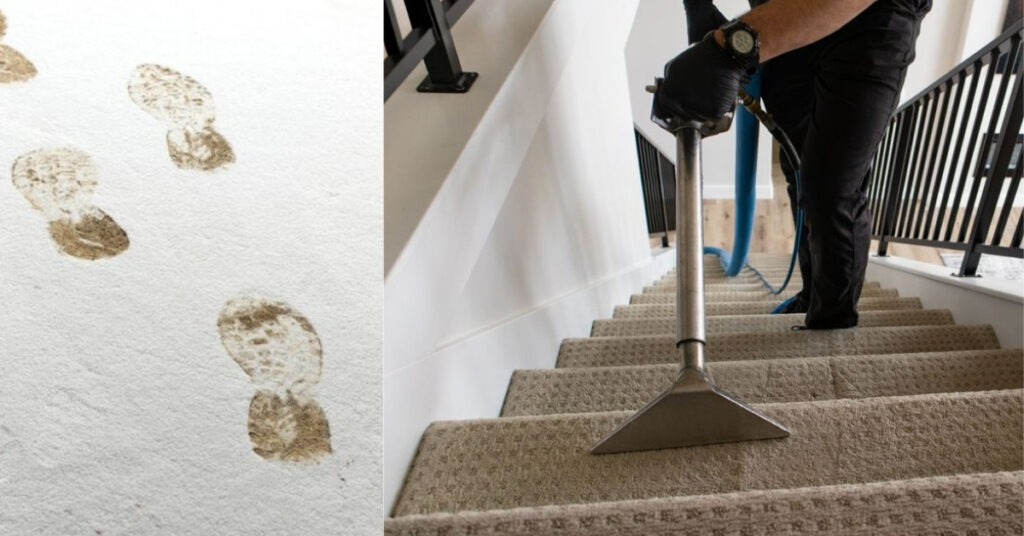
Before you begin the cleaning process, gathering the right tools and materials is essential for success. Having everything ready allows you to act swiftly, which significantly increases your chances of completely removing the stain. You will also want to perform a spot test on an inconspicuous area of your carpet to ensure your cleaning solution does not cause any discoloration or damage to the delicate wool fibers.
Proper preparation is the foundation of effective stain removal. This involves not only having the right supplies but also understanding the initial actions to take as soon as a spill occurs. By following these preliminary steps, you can prevent the stain from spreading and becoming more difficult to remove later. This section will guide you through the necessary preparations for tackling any spot on your wool rug.
Gather Your Cleaning Supplies
To effectively get a stain out of a wool carpet, you need a few basic household items. Start by grabbing several clean, white cloths or paper towels, as these are essential for blotting the stain without transferring any color onto the carpet. You will also need a small bowl for mixing your cleaning solution and a spoon for gently scraping off any solid residue from the spill.
Next, prepare your cleaning agents. A mild, pH-neutral detergent, such as a clear dish soap without bleach or lanolin, is a safe choice for wool. Additionally, white vinegar and lukewarm water are fundamental components of many effective homemade cleaning solutions for wool carpets. Having these items on hand will equip you to handle most common household spills promptly and safely.
Perform a Spot Test First
Before applying any cleaning solution to the visible part of your carpet, you must perform a spot test. This is a critical step to ensure the cleaner will not bleach or damage the wool fibers. Choose a hidden area of your carpet, such as a spot under a sofa or inside a closet, to conduct this test. This precaution is vital because wool can be sensitive to certain chemicals.
To perform the test, apply a small amount of your prepared cleaning solution to the hidden area using a clean cloth. Let it sit for a few minutes, then gently blot it with a fresh, damp cloth. After the spot has completely dried, inspect it for any signs of color fading or fiber damage. If the area looks unchanged, the solution is safe to use on the stain.
Blot, Don’t Rub the Stain
When you first notice a spill, your immediate instinct might be to rub it vigorously. However, you should always blot a fresh stain on a wool carpet instead of rubbing. Rubbing can push the stain deeper into the carpet fibers, making it much harder to remove. Furthermore, aggressive rubbing can damage the delicate structure of the wool, causing it to fray or felt.
To blot correctly, take a clean, dry white cloth or a stack of paper towels and press it firmly onto the spill. Start from the outside edge of the stain and work your way inward. This technique helps absorb the liquid without spreading it further. Continue blotting with fresh sections of the cloth until you can no longer lift any more of the spill.
How to Get a Stain Out of a Wool Carpet
Once you have prepared your supplies and addressed the initial spill, it is time to focus on the deep cleaning process. This stage involves using a specific cleaning solution and a methodical approach to lift the stain from the wool fibers. The key is to be gentle and patient, allowing the cleaning solution to do the work without resorting to harsh scrubbing.
Following a structured cleaning method will yield the best results and protect your carpet’s integrity. Each step, from applying the solution to rinsing and drying the area, plays an important role in restoring your carpet to its original condition. Let’s walk through the exact process for treating a stain on a wool carpet.
Apply the Cleaning Solution
After preparing your gentle cleaning solution, which is typically a mixture of mild dish soap and lukewarm water, it’s time to apply it. Dip a clean, white cloth into the solution, wringing it out so it is damp but not soaking wet. The goal is to introduce just enough of the cleaner to break down the stain without oversaturating the wool fibers.
Gently blot the stained area with the damp cloth. Again, start from the outer edges and move toward the center to prevent the stain from spreading. Continue this process, using fresh parts of the cloth, until the stain begins to fade. Avoid pouring the cleaning solution directly onto the carpet, as this can lead to water damage and potential mold growth underneath.
Rinse the Area Thoroughly
After the stain has been lifted, the next crucial step is to rinse the area to remove any remaining cleaning solution. Leaving soap residue in the carpet can attract more dirt over time, leading to a new spot. To rinse, dampen a new, clean cloth with plain lukewarm water and gently blot the treated area.
Continue blotting with the water-dampened cloth, rinsing the cloth frequently to ensure you are effectively removing all the soap. This process dilutes and lifts the detergent from the wool fibers. Be thorough during this step to ensure no residue is left behind. Proper rinsing is just as important as the cleaning itself for the long-term health of your carpet.
Dry the Carpet Completely
Once you have thoroughly rinsed the cleaned area, it is essential to dry it as quickly and completely as possible. Excess moisture can damage the wool fibers and the carpet backing, and it can also create an environment for mold and mildew to grow. Start by blotting the area with dry, clean towels to absorb as much water as you can.
After blotting, you can help the area dry faster by placing a fan or a dehumidifier nearby. Proper air circulation is key to quick and effective drying. Avoid using direct heat, such as from a hairdryer, as high temperatures can shrink or damage the delicate wool fibers. Allow the carpet to air-dry completely before walking on it or placing furniture back on top.
Handling Specific Stains on Wool Carpets
While the general cleaning method works for many spills, some stubborn stains require a more targeted approach. Different substances react differently with wool fibers, so understanding how to treat specific types of stains, such as coffee, red wine, or pet urine, is incredibly useful. Each of these common household spills requires a slightly different solution or technique for effective removal.
This section provides tailored advice for some of the most challenging stains you might encounter on your wool carpet. By using the correct cleaning agent for each type of spill, you can significantly improve your chances of completely eliminating the spot. Remember to always spot-test any new cleaning solution on a hidden area of your carpet first.
Removing Coffee and Tea Stains
Coffee and tea stains are common, and their tannins can leave a lasting mark if not treated promptly. To get a stain out of a wool carpet caused by coffee or tea, first blot up as much of the liquid as possible. Then, mix a solution of one part white vinegar to two parts lukewarm water. This acidic solution helps to break down the tannins in the stain.
Apply the vinegar solution to the stain with a clean cloth, blotting gently. Let it sit for about 10 to 15 minutes, then blot the area with a new cloth dampened with plain water to rinse. Finally, blot the area dry with a clean towel. For stubborn coffee stains with milk, you may need to follow up with the mild detergent solution mentioned earlier.
Tackling Red Wine Spills
A red wine spill can feel like a disaster, but quick action can save your wool carpet. Immediately blot the spill with a clean, dry cloth to absorb as much wine as you can. Do not rub, as this will only push the pigment deeper into the fibers. One popular method involves covering the fresh stain with a generous amount of salt, which helps draw the wine out of the carpet.
After letting the salt sit for a few hours or until it turns pink, vacuum it up. Next, treat any remaining discoloration by blotting with a solution of lukewarm water and a small amount of mild detergent. Alternatively, a mixture of equal parts hydrogen peroxide and water can be effective, but you must spot-test this solution first, as it can have a bleaching effect.
Addressing Pet Accidents
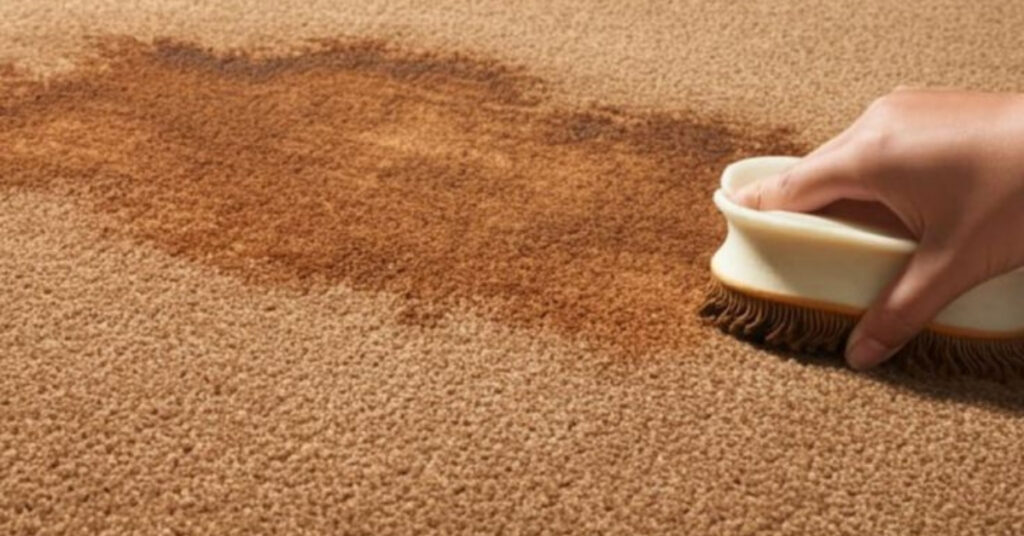
Pet urine stains not only leave a visible mark but also an unpleasant odor. To clean pet accidents, it’s important to address both the stain and the smell. First, blot the area thoroughly to absorb as much urine as possible. Then, apply a solution of equal parts white vinegar and lukewarm water to the stain. The vinegar helps to neutralize the ammonia in the urine, which is the source of the odor.
After blotting with the vinegar solution, rinse the area with a cloth dampened with plain water. Once the area is clean, you can sprinkle baking soda over the spot while it is still slightly damp. Let the baking soda sit for several hours or overnight to absorb any lingering odors, then vacuum it up thoroughly. This two-step process effectively removes both the stain and the smell.
Your Final Step for a Spotless Carpet
Maintaining a clean wool carpet goes beyond just treating individual stains. Regular care and a proper maintenance routine will keep your carpet looking fresh and extend its lifespan. By incorporating a few simple habits into your cleaning schedule, you can protect your investment and ensure it remains a beautiful feature in your home for years to come. Ultimately, a proactive approach is the best way to manage the appearance and health of your wool carpet.
Frequently Asked Questions
1. Can I use a steam cleaner on a wool carpet?
No, you should generally avoid using a steam cleaner on a wool carpet. The high heat and excessive moisture can damage the natural fibers, causing them to shrink, felt, or lose their shape. Instead, opt for professional dry cleaning or low-moisture cleaning methods specifically designed for wool.
2. How often should I professionally clean my wool carpet?
It is a good idea to have your wool carpet professionally cleaned every 12 to 18 months. Professional cleaners have the expertise and specialized equipment to deep clean wool safely, removing embedded dirt and allergens without causing damage.
3. Is it safe to use baking soda on a wool carpet?
Yes, baking soda is generally safe to use on a wool carpet as a natural deodorizer. You can sprinkle it over the carpet, let it sit for a few hours to absorb odors, and then vacuum it up thoroughly. However, always test it on a small, hidden area first.
4. What should I do if a stain won’t come out?
If you have tried the recommended methods and the stain remains, it is best to call a professional carpet cleaner. They have access to stronger, specialized cleaning solutions and equipment that can often remove stubborn stains without damaging the wool.
5. Can I use bleach-based cleaners on wool?
No, you should never use bleach or any cleaners containing chlorine on a wool carpet. Bleach is a harsh chemical that will permanently damage and discolor the wool fibers. Always stick to pH-neutral or mild, wool-safe detergents.
As an Amazon Associate, I earn from qualifying purchases.

